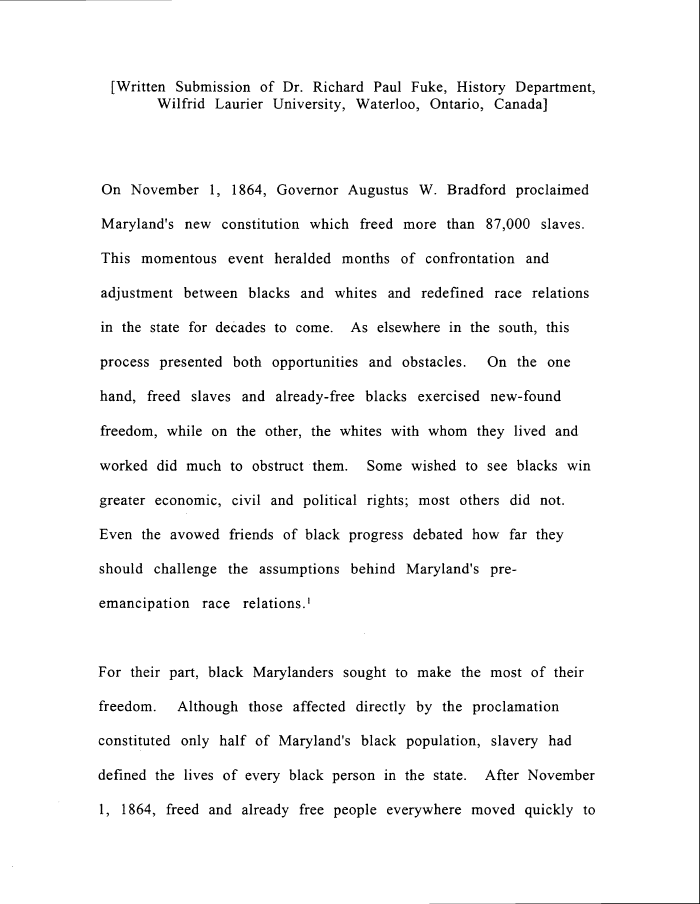 |
||||
|
TASK FORCE TO STUDY THE HISTORY AND LEGACY OF SLAVERY IN MARYLAND (Final Report) 1999/12/31 MdHR 991422 MdHR 991422, Image No: 291 Print image (40K) |
 |
||||
|
TASK FORCE TO STUDY THE HISTORY AND LEGACY OF SLAVERY IN MARYLAND (Final Report) 1999/12/31 MdHR 991422 MdHR 991422, Image No: 291 Print image (40K) |
| [Written Submission of Dr. Richard Paul Fuke, History Department, Wilfrid Laurier University, Waterloo, Ontario, Canada] On November 1, 1864, Governor Augustus W. Bradford proclaimed Maryland's new constitution which freed more than 87,000 slaves. This momentous event heralded months of confrontation and adjustment between blacks and whites and redefined race relations in the state for decades to come. As elsewhere in the south, this process presented both opportunities and obstacles. On the one hand, freed slaves and already-free blacks exercised new-found freedom, while on the other, the whites with whom they lived and worked did much to obstruct them. Some wished to see blacks win greater economic, civil and political rights; most others did not. Even the avowed friends of black progress debated how far they should challenge the assumptions behind Maryland's pre-emancipation race relations.1 For their part, black Marylanders sought to make the most of their freedom. Although those affected directly by the proclamation constituted only half of Maryland's black population, slavery had defined the lives of every black person in the state. After November 1, 1864, freed and already free people everywhere moved quickly to |